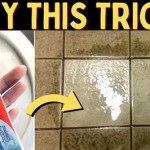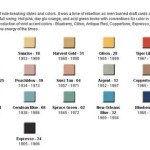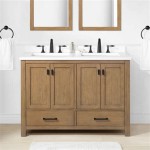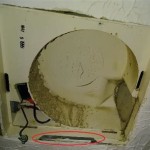DIY Bathroom Sink Bowl: A Comprehensive Guide
Creating a custom bathroom sink bowl offers a unique opportunity to personalize a frequently used space within the home. It allows for the incorporation of individual aesthetic preferences, the utilization of unconventional materials, and the tailoring of dimensions to fit specific spatial requirements. This article provides a detailed exploration of the process, potential materials, and relevant considerations for crafting a DIY bathroom sink bowl.
Material Selection and Preparation
The foundation of any successful DIY project lies in the appropriate choice of materials. For bathroom sink bowls, durability, water resistance, and ease of cleaning are paramount. Several materials lend themselves well to this application, each possessing distinct advantages and drawbacks.
Concrete, for example, offers significant versatility in terms of shaping and texturing. It allows for the creation of both minimalist and highly ornamental designs. However, concrete is inherently porous and requires a robust sealant to prevent water absorption and staining. The weight of concrete is another factor to consider, particularly for countertop-mounted installations. Careful planning is necessary to ensure the supporting structure can adequately bear the load.
Copper provides a visually striking alternative, boasting antimicrobial properties and a natural resistance to corrosion. Copper sink bowls can be formed through hammering techniques or welding pre-fabricated components. The metal's malleability allows for the creation of intricate details and custom shapes. However, copper can be relatively expensive, and its tendency to develop a patina over time may not appeal to all aesthetics. Periodic polishing may be required to maintain a bright, shiny finish.
Glass represents another viable option, particularly for a modern or minimalist bathroom design. Glass sink bowls can be created through fusing, slumping, or blowing techniques. Tempered glass is essential for safety and durability, minimizing the risk of shattering upon impact. While glass is non-porous and easy to clean, it can be susceptible to scratches and chips. Furthermore, specialized equipment and skills are often required for glassworking, potentially increasing the complexity of the project.
Wood, when properly sealed and treated, can also be used to create a unique and visually appealing sink bowl. Hardwoods such as teak, mahogany, or ipe are naturally water-resistant and resistant to rot. The wood must be carefully shaped, sanded, and coated with multiple layers of marine-grade epoxy or polyurethane to provide a waterproof barrier. Regular maintenance and re-application of sealant may be necessary to prevent water damage over time. The choice of wood must also consider its aesthetic compatibility with the overall bathroom design.
Regardless of the chosen material, thorough preparation is crucial. This includes cleaning and preparing the material surface, gathering necessary tools and equipment, and creating a detailed plan outlining the dimensions, shape, and drainage system integration.
Construction Techniques and Design Considerations
The construction of a DIY bathroom sink bowl depends largely on the chosen material and desired design. Concrete sink bowls typically involve creating a mold, pouring the concrete mixture, allowing it to cure, and then demolding and sealing the finished product. The mold can be constructed from various materials, including wood, melamine, or plastic. Proper reinforcement with wire mesh or fiber is essential to prevent cracking.
Copper sink bowls often involve cutting and shaping copper sheets, then welding or soldering the pieces together to form the desired shape. Specialized welding equipment and expertise are required for this method. Alternatively, pre-fabricated copper bowls can be modified or customized to fit specific design requirements. Hammering techniques can be used to create textured surfaces and decorative details.
Glass sink bowl construction typically requires specialized equipment such as a kiln for fusing or slumping glass. The glass is cut and shaped, then heated to a high temperature to fuse the pieces together or slump the glass into a mold. Safety precautions are paramount when working with glass at high temperatures. Tempered glass is crucial to ensure structural integrity and prevent shattering.
Wood sink bowl construction involves precise woodworking techniques. The wood is carefully shaped, sanded, and assembled using waterproof adhesives and fasteners. Multiple layers of sealant are applied to create a waterproof barrier. The grain orientation of the wood should be carefully considered to minimize the risk of warping or cracking.
Beyond the construction method, several design considerations must be addressed. The size and depth of the bowl should be appropriate for the intended use. The slope of the bowl should ensure efficient drainage. The placement and size of the drain hole must be compatible with the chosen plumbing fixtures. The overall shape and style of the bowl should complement the existing bathroom décor.
Furthermore, legal and safety considerations must be addressed. Ensure the DIY sink bowl complies with local plumbing codes and regulations. Consider hiring a qualified plumber for the installation and connection to the water supply and drainage system. Prioritize safety throughout the construction process, using appropriate protective gear and following recommended safety procedures.
Finishing and Installation
The finishing touches are critical to the overall appearance and longevity of a DIY bathroom sink bowl. For concrete sink bowls, proper sealing is essential. Several coats of a high-quality concrete sealer should be applied, allowing each coat to dry thoroughly before applying the next. The sealer will protect the concrete from water absorption, staining, and chemical damage. Polishing the concrete surface can enhance its appearance and make it easier to clean.
Copper sink bowls may require polishing to maintain a bright, shiny finish. A copper cleaner and polish can be used to remove tarnish and restore the metal's luster. Alternatively, the patina can be allowed to develop naturally for a more rustic appearance. A clear coat of lacquer can be applied to protect the copper from further oxidation.
Glass sink bowls typically require minimal finishing. However, edges may need to be smoothed and polished to prevent chipping or scratching. A glass cleaner can be used to maintain the clarity and shine of the glass.
Wood sink bowls require regular maintenance to prevent water damage. The sealant should be inspected periodically and re-applied as needed. A mild soap and water solution can be used to clean the wood surface. Avoid using abrasive cleaners or harsh chemicals, as they can damage the sealant.
Installation of the DIY bathroom sink bowl involves connecting it to the water supply and drainage system. This should be done by a qualified plumber to ensure proper installation and prevent leaks. The sink bowl should be securely mounted to the countertop or vanity, using appropriate mounting hardware. Consider the weight of the sink bowl when selecting mounting hardware, particularly for heavy materials such as concrete.
Proper installation is crucial for ensuring the functionality and safety of the sink bowl. A poorly installed sink bowl can lead to leaks, water damage, and structural problems. Therefore, it is essential to follow all installation instructions carefully and to seek professional assistance if needed.
In summary, creating a DIY bathroom sink bowl is a rewarding endeavor that allows for significant customization and personalization. However, it requires careful planning, meticulous execution, and a thorough understanding of the materials and techniques involved. By carefully considering the material selection, construction techniques, and finishing process, homeowners can create a unique and functional bathroom sink bowl that reflects their individual style and enhances the overall aesthetic of their bathroom space.

Diy Sink From Vintage Bowl Farmhouse On Boone

Diy Sink From Vintage Bowl Farmhouse On Boone

15 Seriously Diy Upcycled Sink Ideas That Inspired Homemydesign Bathroom Copper

Diy Vessel Sink From A Serving Bowl Little Victorian

17 Diy Bathroom Sink Ideas

Roundup 10 Diy Sinks And Vanities A Tub Shower Too Bathroom Sink Design Unique Vanity

13 Crazy Creative Diy Bathroom Vanities Decoist

Materials Bekvam Kitchen Trolley Description This Is A Simple Using Trolle Small Bathroom Sinks Diy Vanity Sink Bowls

How Create Your Own Bathroom Sink 15 Inspiring Ideas

13 Crazy Creative Diy Bathroom Vanities Decoist







